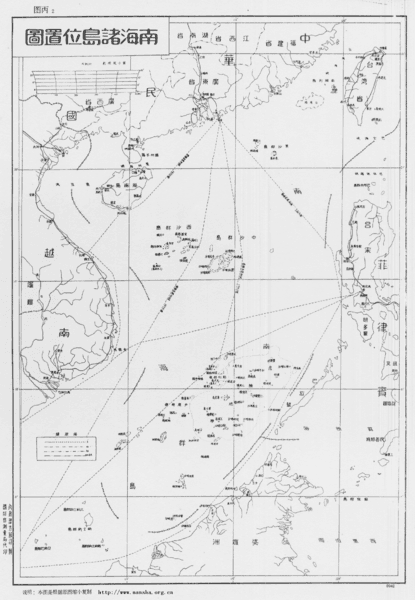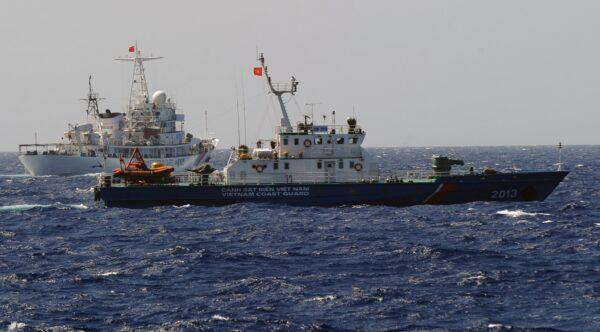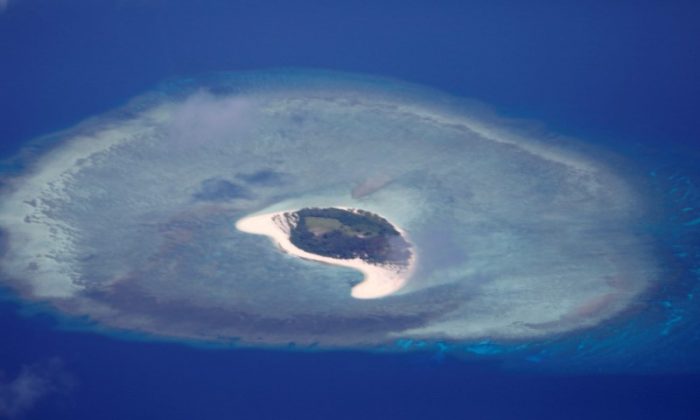Vietnam is building artificial islands at a record pace in the South China Sea as tensions with the Chinese communist regime increase in the disputed waters, according to a U.S. think tank.
Vietnam has built 692 new acres of islands through dredging and landfill since November 2023, the Washington-based Center for Strategic and International Studies’ Asia Maritime Transparency Initiative said in a report.
The new land amounts to almost as much as in the previous two years combined—404 acres created in the first 11 months of 2023 and 347 acres in 2022, the June 7 report says.
China has been building islands in the South China Sea since 2013 in waters where it claims sovereignty, including areas where Vietnam has been building islands in recent years.
China asserts that it holds exclusive rights to more than 80 percent of the South China Sea—encompassing 1.4 million square miles in the Pacific Ocean that holds up to 22 billion barrels of oil and 290 trillion cubic feet of natural gas.
Although China claims sovereignty over the waters, citing the nine-dash line historical claims within the South China Sea, the Philippines, Brunei, Malaysia, Vietnam, and Indonesia also claim sovereignty over their exclusive economic zones in the South China Sea. Some of them overlap with each other and with communist China’s nine-dash line and the 11-dash demarcation of Taiwan (the Republic of China, or ROC).
In recent years, the Chinese regime has increased its aggression in the South China Sea toward Vietnam and other Southeast Asian countries. In 2019, the two countries had a weeks-long standoff near an offshore oil block in disputed waters.
In 2023, Vietnam protested China’s unilateral fishing ban in the disputed waters of the South China Sea.
Besides building artificial islands for military expansion, the ruling Chinese Communist Party (CCP) has driven away foreign fishing boats and used water cannons to attack other countries since escalating its aggression in the South China Sea last year.
New Coast Guard rules that take effect on June 15 allow the communist regime’s Coast Guard to arbitrarily arrest anybody it deems to be in its territorial waters and to fire at foreign ships. The announcement has made the neighboring countries anxious.

The foreign ministers of the Association of Southeast Asian Nations (ASEAN) in a rare statement in December 2023, called for a peaceful resolution of disputes in the South China Sea. Meanwhile, Vietnam, Malaysia, and Indonesia have been increasing efforts to conduct their own offshore oil and gas projects in the waters, while strengthening maritime security cooperation with the Philippines.
In response to the CCP’s aggression, Philippine President Ferdinand Marcos Jr. has expanded U.S. military bases in the Philippines and attended the first-ever U.S.–Japan–Philippines summit in Washington in April. The same month, thousands of U.S. and Philippine soldiers held exercises in the South China Sea. The Philippines also plans to sign a Reciprocal Access Agreement with Japan by the end of this year, allowing troops to train and exercise in each other’s countries.
Regarding recent developments in the South China Sea, Ma Chun-wei, associate professor at the Institute of International Affairs and Strategy at Tamkang University in Taiwan, told The Epoch Times that the CCP mainly uses its “Belt and Road Initiative to resolve disputes with some of the Southeast Asian countries such as Malaysia and Indonesia, which are relatively far from China.
“But it’s more aggressive toward Vietnam and the Philippines. The Philippines and Vietnam hope that ASEAN will have a common South China Sea agreement to counter the CCP, and they rely on the intervention of countries outside the region, mainly the United States,” Mr. Ma said.
9-Dash Line, 11-Dash Line, Vietnam
The PRC’s nine-dash line claim is based on the original 11-dash line of the South China Sea water territory of the ROC (1911–present). After its defeat in World War II in 1945, Japan relinquished the territories it occupied during the war, including the Spratly and Paracel Islands in the South China Sea, where Qing Dynasty China and the ROC established garrisons and had administrative control.
After the return of sovereignty over the islands, the ROC’s Executive Yuan in 1947 officially released a map titled “Position of the South China Sea Islands,” which showed an 11-dash line of ocean territories around a group of islands that belonged to China.

In 1948, the ROC government declared the right to the maritime resources of the islands and reefs within the lines. When the communist regime took over mainland China and established the communist People’s Republic of China in 1949, it recognized that line.
During the Vietnam War in 1957, in a spirit of “comradeship and brotherhood,” the CCP’s then-leaders, Mao Zedong and Zhou Enlai, secretly signed a treaty with North Vietnam, another communist state, removing two dashes to give Vietnam the Gulf of Tonkin and Bach Long Vi—the most strategically important island in the South China Sea. In 1975 communist Vietnam took over South Vietnam, to which the French transferred its sovereignty claim of the Spratly Islands that it occupied during the colonialization of Indochina and the surrounding waters and islands after World War II. Communist Vietnam inherited the claim of sovereignty over the disputed Spratly Islands since then.
The PRC has been using the nine-dash line of the U-shaped area in the South China Sea to mark its maritime territory, including all islands and reefs within it, while the ROC government, which retreated to Taiwan, has retained the 11-dash line.
In recent years, the ROC government in Taiwan has reaffirmed territorial sovereignty in the South China Sea while adopting a more cooperative approach with other countries to ensure freedom of navigation and to promote collaboration.
Southeast Asia Versus CCP

Regarding Vietnam’s stance, Mr. Ma said: “Vietnam is a bit more tricky. It has always had a foreign policy of not taking sides. But Vietnam’s response on hard issues [disputes with China], including the Gulf of Tonkin, is similar to that of the Philippines, which is to seek cooperation with major powers outside the region, including the United States and France.”
Chung Chih-tung, assistant research fellow at Taiwan’s Institute for National Defense and Security Research, told The Epoch Times that the CCP has raised the South China Sea sovereignty issue to a level of national security.
“This certainly has a deterrent effect to a certain extent. But on the other hand, the reaction from other countries will also become greater, making it difficult [for the CCP] to get out of the situation,” he said.
“It actually produced a huge negative effect. The CCP blatantly demonstrated its aggressive hegemony and quite successfully united the countries in the entire South China Sea region to cooperate and counter China (CCP). It confirmed that China (CCP) is not rising peacefully and is a threat.”
Song Tang and Yi Ru contributed to this report.

